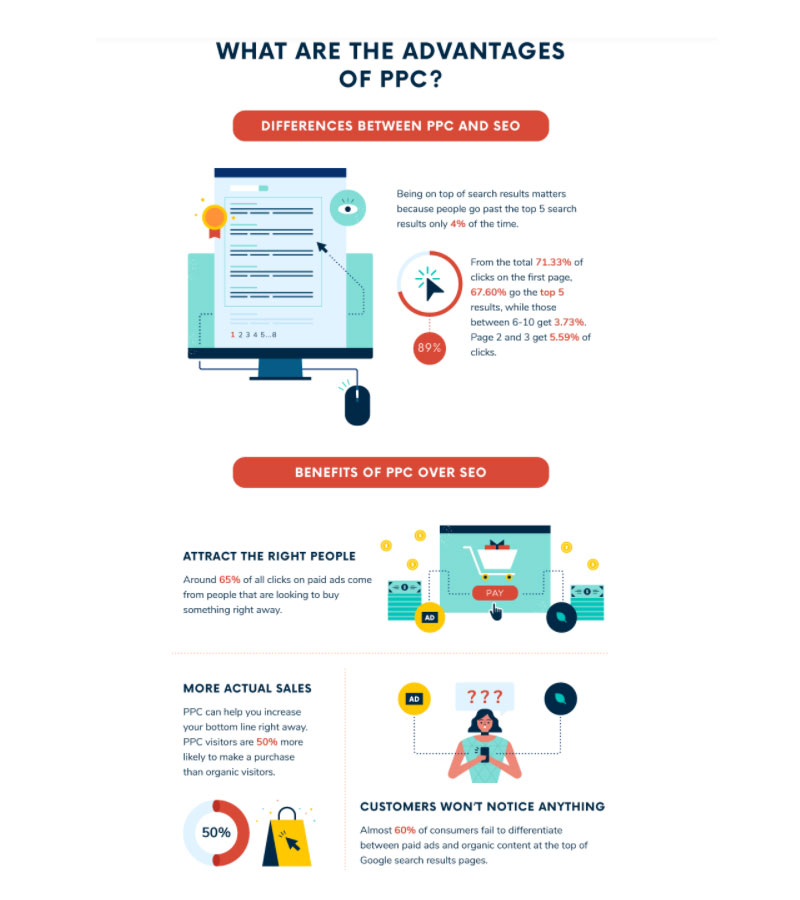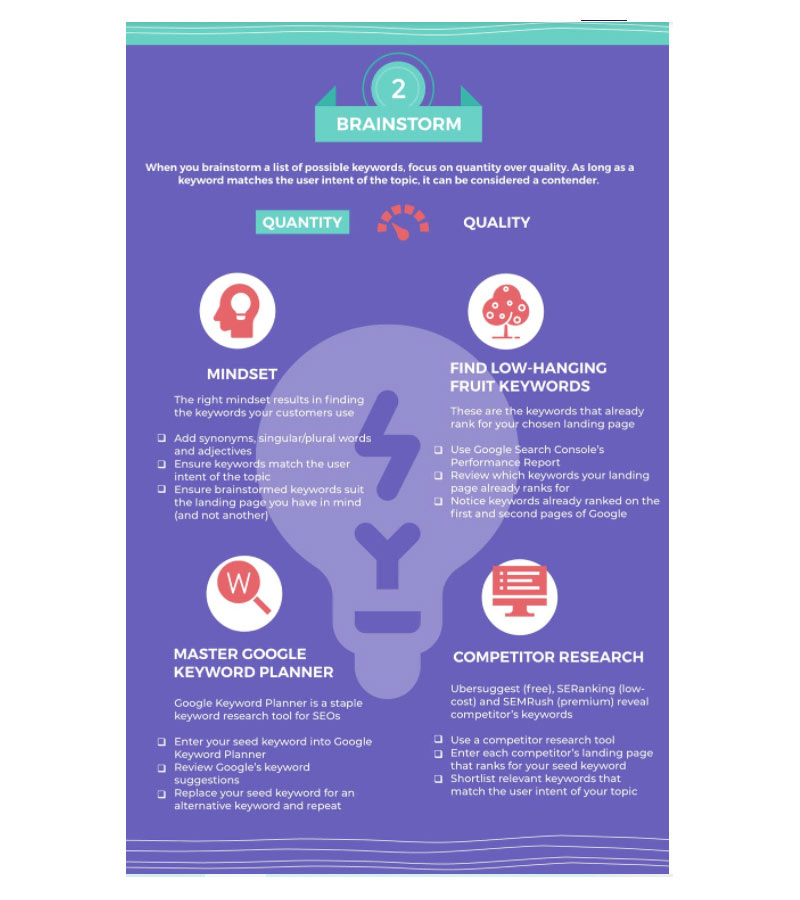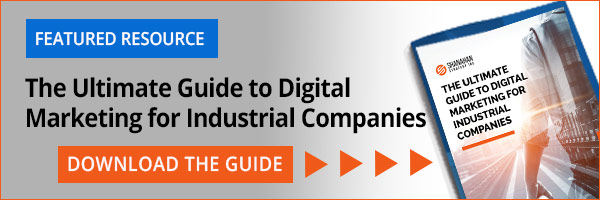While it may seem like Google and pay-per-click (PPC) ads are only effective for consumer brands, they’re one of the most efficient ways to drive traffic and boost sales for your manufacturing business. In a competitive landscape, manufacturers can leverage PPC ads to get their brand in front of distributors to attract future partnerships and convert leads into buyers.
About 74% of brands agree that PPC and Google ads are major growth drivers for their business and it’s even suggested that companies will spend $137 billion on digital ads by 2022. In addition, since Google owns 92% of the global search market, you have a greater chance of investing your budget in a channel that will boost your ROI.
If you’re looking to scale your business with the right marketing strategy, Google and PPC manufacturing ads help you connect to new customers who are already searching for your products. Let’s look at how you can jumpstart your digital strategy with online ads today.
Key Takeaways:
- PPC and Google Ads appear in search engine results based on your selected keywords.
- Leads earned from PPC ads are generally high-quality and more ready to buy.
- PPC works best when combined with other market strategies like SEO and content marketing.
Understanding PPC Ads for Manufacturers vs. SEO
When you create a PPC ad, you only pay when a user clicks on your ad. Your ad appears in the search engine based on the specific keywords people are already searching for and what you bid on in your campaign. Since Google is the most popular search engine, Google Ads are typically profitable among manufacturers compared to paid social ads or other PPC ad platforms from Bing, Yahoo! and others.
As you generate lead data from your ads, you can scale your ad campaign up or down to match performance. In this way, you can ensure that sales you receive from leads exceeds what you are paying for your ads, leaving you with a higher profit.
In comparison, SEO search results or organic traffic are based on high-quality content combined with keyword optimization. In the long run, content marketing and SEO are more sustainable strategies because they can drive organic website traffic over time. However, it takes a dedicated strategy and other resources to be successful.

Top 5 Ways Manufacturers Can Boost ROI with PPC and Google Ads
While getting started with PPC and Google Ads may seem intimidating, the right strategy and messaging help you stand out against competitors. Here are three best practices to help you get started:
1. Target Late Stage Leads with PPC Advertising
Unlike organic marketing strategies like SEO and content development, paid search ads are a faster way to drive high-quality website traffic and introduce your brand to new distributors and customers. However, you’ll need to continuously optimize your ads to ensure you’re maximizing your return and not increasing bounce rates with unqualified leads.
As a start, you’ll want to target the right audience, with the right message, in their exact sales funnel stage. Many experts categorize the B2B sales funnel into five different stages:
- Becoming aware of your brand
- Developing an interest in your products
- Evaluating the pros and cons of your offer
- Intending to make a purchase
- Finalizing the sale of a product
Since users are already searching for your products, you can often skip the first three stages of the funnel and jump right to the end with PPC ads. As a result, clicks received from your ads have a 50% higher chance of leading to a conversion than organic leads.
2. Customize Your Reach for the Best Results
Research shows that 65% of customers click on PPC ads and have a potential 200% ROI for your manufacturing business. However, with the average buyer seeing hundreds of online ads daily, it’s important to create targeted and optimized campaigns that capture quality clicks.

You can decrease low-quality leads and increase late-stage buyers through targeted keywords. For example, if you are an automotive manufacturer and use the keyword “engine,” you may rank for any search queries about engines. Instead, if you used long-tail, specific keywords like “6-cylinder engine for sale,” you are more likely to appear in the search results of those in the last stage of buying looking for a vendor.
3. Use Location Targeting to Enhance Campaign Performance
Depending on your business, targeting specific geographic areas or regions can quickly boost the results of your PPC campaigns. Google Ads location targeting allows your ads to appear in the geographic locations that you choose: countries, areas within a country, a radius around a location, or location groups, which can include places of interest, your business locations, or tiered demographics. This strategy can focus your budget on specific locations that have a greater density of prospective customers while avoiding geographic areas with lower density.
Location targeting is based on a variety of signals, including users’ settings, devices, and behaviors on Google’s platform. It uses Google’s best effort to serve ads to users who meet your location settings. Because these location signals vary, 100% accuracy is not guaranteed in every situation. However, our experience with the platform has shown location targeting to very effective in most cases.
In addition, while you can target certain locations, you can also exclude ads from certain locations.
4. Leverage Negative Keyword Targeting
Like using location targeting to improve results, negative keywords let you exclude search terms from your campaigns and help you focus on only the keywords that matter to your prospective customers. Better targeting can put your ad in front of interested users and increase your return on investment (ROI).
One key to a highly targeted campaign is choosing what not to target. When selecting negative keywords for Search campaigns, look for search terms that are similar to your keywords, but might cater to customers searching for a different product. For example, if you’re an optometrist who sells eyeglasses, you may want to add negative keywords for search terms like “wine glasses” and “drinking glasses”.
5. Generate Immediate and Timely Results with Combined Tactics
While top SEO rankings take a long time to establish, it often leads to long-term returns through evergreen content and optimized keywords. Meanwhile, PPC ads will only continue to give returns if you continue to pay for them due to the pay-to-play strategy.
Instead of choosing one strategy over the other, it’s important to have a healthy balance of both. If you see a dip in SEO results, you can run a PPC ad for similar keywords to attract visitors during that time. Then, once your SEO clicks return, you can stop your ad with that keyword and test new messaging. In this way, your revenue won’t take a hit even if your organic rankings do.
Because your ads are customizable, you can choose when they run. For example, if you are selling industrial goods to large distributors, time your ads for business hours during the workweek when decision-makers are more likely searching and making purchases.
Develop Omnichannel Strategy to Close More Sales
If you want to see a significant return from your ads, you need quality content to back up any claims you advertise. With about 72% of marketers believing that content marketing increases engagement, you can develop dedicated landing pages, blogs, e-books, and more to demonstrate your credibility, build trust and convert visitors.
The best way to drive traffic to your website and increase sales is by combining tactics. While PPC and Google Ads have many great benefits, they aren’t a standalone marketing strategy for your manufacturing business. Instead, implement an omnichannel approach with paid ads, SEO, content marketing, and more.
Get up and running with your PPC or Google Ads campaign with the help of our manufacturing marketing experts at Shanahan Strategy Inc.

